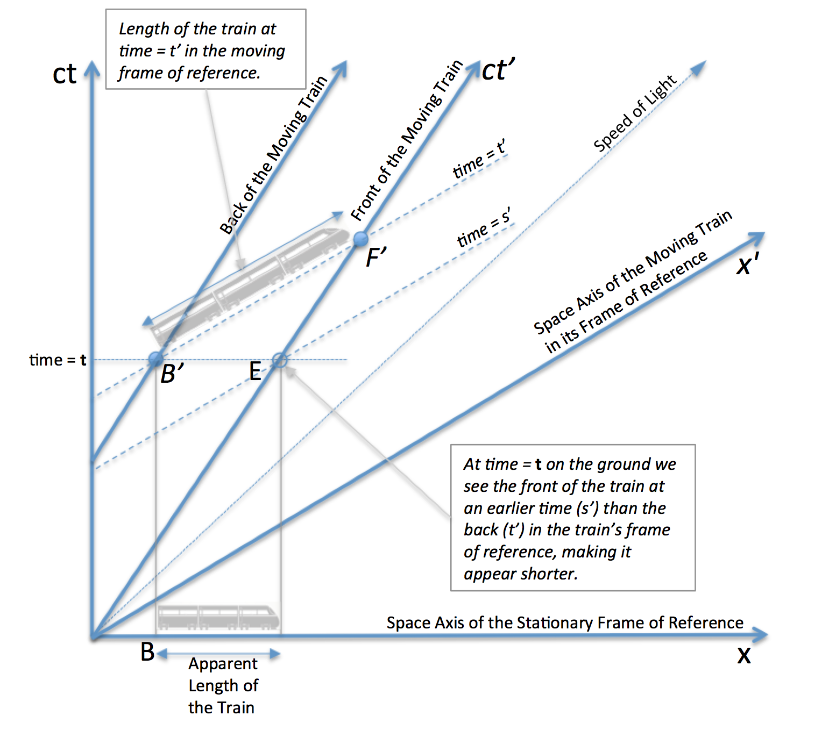A train is moving at a relativistic speed relative to a stationary observer. The train cannot be treated as a single event because it exists across multiple locations in space. Therefore the motion of the front and back of the train is shown with two separate world lines. The train is moving from left to right, and the stationary observer encounters the front before the back along any vertical time axis.

Events B and F mark the back and front of the train at time t’ in the moving frame of reference. The length of the train is the distance between B and F. The stationary observer observes the event B, the back of the train, at time “t”, and therefore must see the front of the train at the same time “t”, parallel to the x-axis, which is event E. We are seeing the front of the train at an earlier time (s’) than the back (t’) in the train’s frame of reference. The front has not had time to “catch up” to where it should be compared to the back, and that is why the train seems shorter. The distance in space between events B and E is the apparent length of the train.